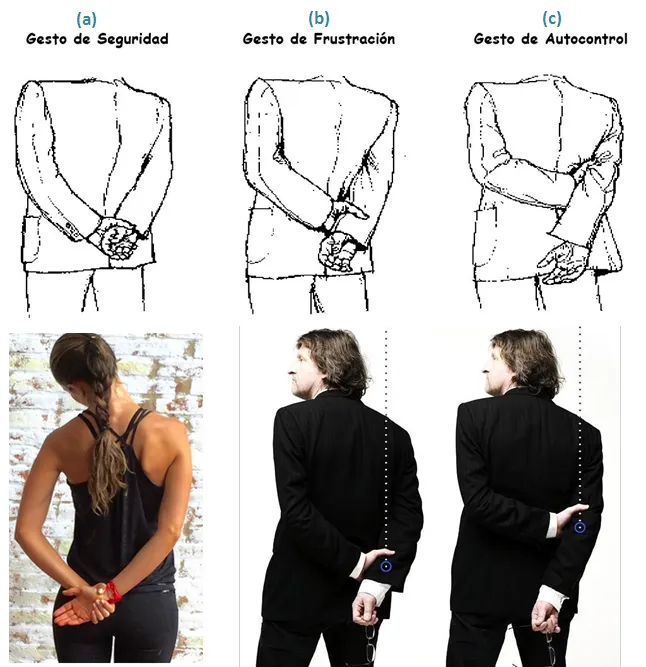In the previous issue we learned about how to interpret the three main types of gestures with interlaced fingers and 2 versions of hands in ogive. It turns out that the height of the interlocked hands was directly proportional to the intensity of the negative attitude that is shown to us, and that in both versions of the hands in ogive, denote security, but that however, depending on the scenario, it may be beneficial or harmful to us.
If you have not read it, I invite you to read it here:
What we should know: Tips-Body Language (Chap.4_Part 1).
What we should know: Tips-Body Language (Chap.4_Part 2).
Gestures of holding hands, arms or wrist
The gestures of holding hands (a), arms or wrists symbolizes superiority and security, because it allows the person to expose vulnerable areas such as the stomach, throat and heart in an unconscious act of daring.
For example, many members of the British royal family are famous for their habit of walking well upright, chin forward and hands taken behind the back. However, this position is not only adopted by those of royalty, they are also typical of police, military, school directors, and anyone with any kind of authority.
In the case of the Australian policemen; characterized by not carrying firearms, they often adopt this position while supporting the weight of their body on one foot and then on the other, swinging. While the police carrying guns do not take this attitude, but adopt a position where they support their hands on the hips, which denotes in itself, an aggressive gesture. This suggests that the weapon is giving sufficient authority to the police, which makes it unnecessary to make the gesture made by the Australian policeman.
The gestures of holding the wrist (b) should not be confused with holding hands, since this action (holding the wrist) indicates that our interlocutor shows a degree of frustration and tries to self-control.
The degree of frustration or indignation that the interlocutor presents can be measured in how high the hand that takes the arm (c); that is, the higher the hand reaches, the more asocial and angry the listener is. For this reason, the person who takes the arm (Figure c), shows greater need to control himself with respect to the person who is holding the wrist (Figure b).
These self-containment gestures can often be viewed by vendors who visit their clients and must wait until they receive them. In these cases, the seller should be cautious since a cunning customer will know how to interpret the body language of the adopted position.

Source 1|Source 2|Source 3
_________________________________________________________(To be continue)